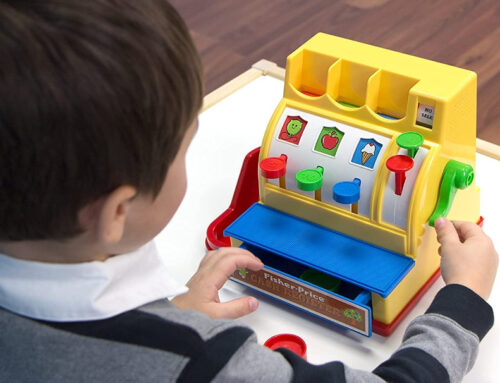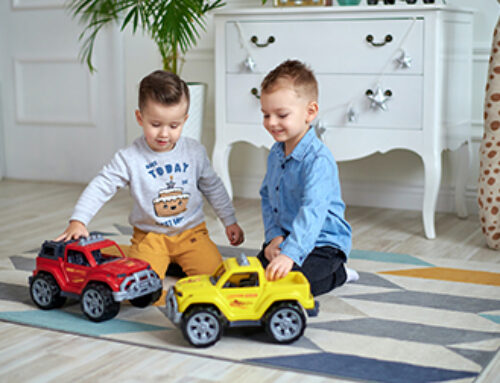Engaging in tactile or “messy” play is essential for the development of fine motor skills and discrimination between textures, helping our kids understand the world around them. DIY Slime is a fun activity to keep your kids entertained with a fun, sticky toy at the end! You can also throw it in a ziplock bag (making sure to tape the edges shut to contain the mess) and you have a portable fidget! You can make it winter themed by dying the slime blue while making it, adding glitter, or adding snowflake sequins or beads.
Click here for a simple guide on how to make your own.

Areas of Development:
- Communication: Follow your child’s lead, and work to expand their output of communication with modeling of action words or descriptive words. Modeling simple, one to two-word labels can help promote language development during play.
- Fine Motor: To increase the fine motor challenge with slime, try pushing beads into the slime and pulling them back out. This is a great way to work on functional grasp patterns, arch development, discrimination between sides of the hand, and opening of the thumb web space.
- Gross Motor: Positioning while engaged in play on the floor is a great way to incorporate strengthening into functional play. Encourage your child to sit up without leaning or have them lay on their belly propped on their elbows. Be sure to encourage your child to keep their head up to promote full-body strengthening!
- Social-Emotional: Use of silly sounds while engaged in play (“squish!”) can help promote joint attention between you and your child. Holding the slime up near your face can promote eye contact and interaction while engaged in play. Parallel play, modeling, and following your child’s lead is a great way to address those foundational skills of social interaction.
- Cognition: While making the slime, your child can practice following a recipe, gathering ingredients, and attending to a task. Challenge them further by asking them what step or ingredient comes next, allowing them to take the lead. This targets sequencing, working memory, and following directions, essential skills to promote problem-solving, and independence in novel tasks.
If you want to upgrade the difficulty level of the activity:
Incorporate a breath control activity into the tactile play with slime. Use a straw to blow bubbles into the slime, creating an exciting visual effect. This promotes oral motor skills such as lip closure and breath control and makes it more difficult for your child to suck the material back through the straw into their mouth, as can happen with water and soap. If that’s still too easy, challenge your child to hum their favorite song while blowing the bubbles, providing high-intensity oral input. It also requires sustained breath control, a skill that contributes to self-regulation.


Blue Bird Day fosters socialization, sensory regulation, and pre-academic learning in children ages 2-7 years in therapeutic rotations that simulate preschool and kindergarten settings. Our compassionate therapists practice a relationship-based and family-centered approach, provide parent training, and collaborate on goals and individualized intensive treatment plans for your child.
We believe in a collaborative and multi-disciplinary team approach to therapy. A team of occupational therapists, speech-language pathologists, dietitians, developmental therapists, behavioral therapists, physical therapists, and therapeutic assistants are created for each child to ensure child and family are fully supported and the best possible results are achieved.
Options for individualized, group and virtual therapy sessions are available as well.
Want to learn more or you have a specific question? Feel free to connect with us here!



